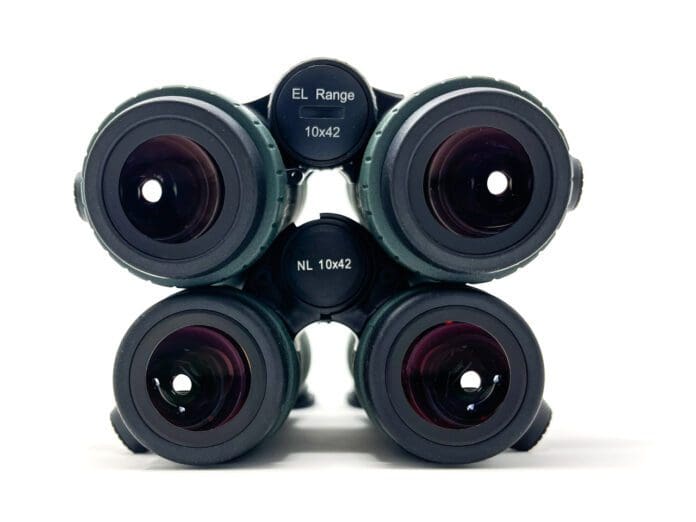There is hardly a piece of equipment that you will carry on your hunting adventures with more value than a set of good binoculars. They are a tool that can make or break your hunt, allow you to be more productive during dawn or dusk, and spot hiding quarry. They are an essential piece of gear, and it only makes sense to buy the best you can afford. Top-tier glass is not cheap by anyone’s standards, but they are worth every… single… penny
Swarovski
With top-tier glass, you purchase optics that cost companies more to make. You are not buying cheaper glass with a built-in warranty; you are purchasing the best product a company can offer and a design that will not fail when it really matters.
If you’ve decided to invest in alpha glass, the hope is to do it once. I hope this comparison of the Swarovski NL Pure and the Swarovski EL Range TA helps with that important decision.
I chose to use a 10×42 binocular as a base for this comparison simply to compare apples to apples. It is also the size/magnification I would choose for an extensive range of western hunting.
Swarovski EL Range TA
The EL Range TA has a built in rangefinder as well as ballistics. Swarovski advertises ranging targets out to 2200 Yards which I found valid. I also ranged game-sized targets out to 1200, even on nearly flat ground. This can be advantageous for antelope hunters on the plains. The feedback at these ranges is really fast compared to other range-finding binoculars I have used.
The TA stands for Tracking Assistant, and with the use of an app on your phone, it records the last three ranges taken and puts them on a map, or will guide you to that location if you do not have cell service.
Robby put together a short video showing the EL Range’s Tracking Assistant in action:
One downside to using the TA feature is you need to put the binoculars in Bluetooth mode each time you want to send readings to your phone. It does not do this automatically when they are turned on. The idea behind TA is to range your game and where it lies to help aid in recovery. I have found it accurate to within 50 feet ranging known items within 1,200 yards.
The internal ballistics leaves something to be desired; however, they produce a correct result. I have used quite a few ballistic calculators for hunting and competition and found Swarovski’s version is the simplest, with little room for variables.
I would love to see them incorporate Applied Ballistics into their products and not reinvent the wheel. With that said, I have found the ballistics to be accurate after playing within the parameters. The downside is you need an area to range far distances to tune the data to match your known DOPE. I would also like to see inputs for muzzle velocity temperatures, as this can make your shot a hit or miss at longer distances.
Swarovski NL Pure
The NL Pure binocular is the flagship model for Swarovski, and for a good reason. They held nothing back when building these. They are a pure joy to use, pun intended. You will be hard-pressed to find a better binocular on the market. If you own a pair of NL Pure binoculars, it could be the last pair you will ever buy.
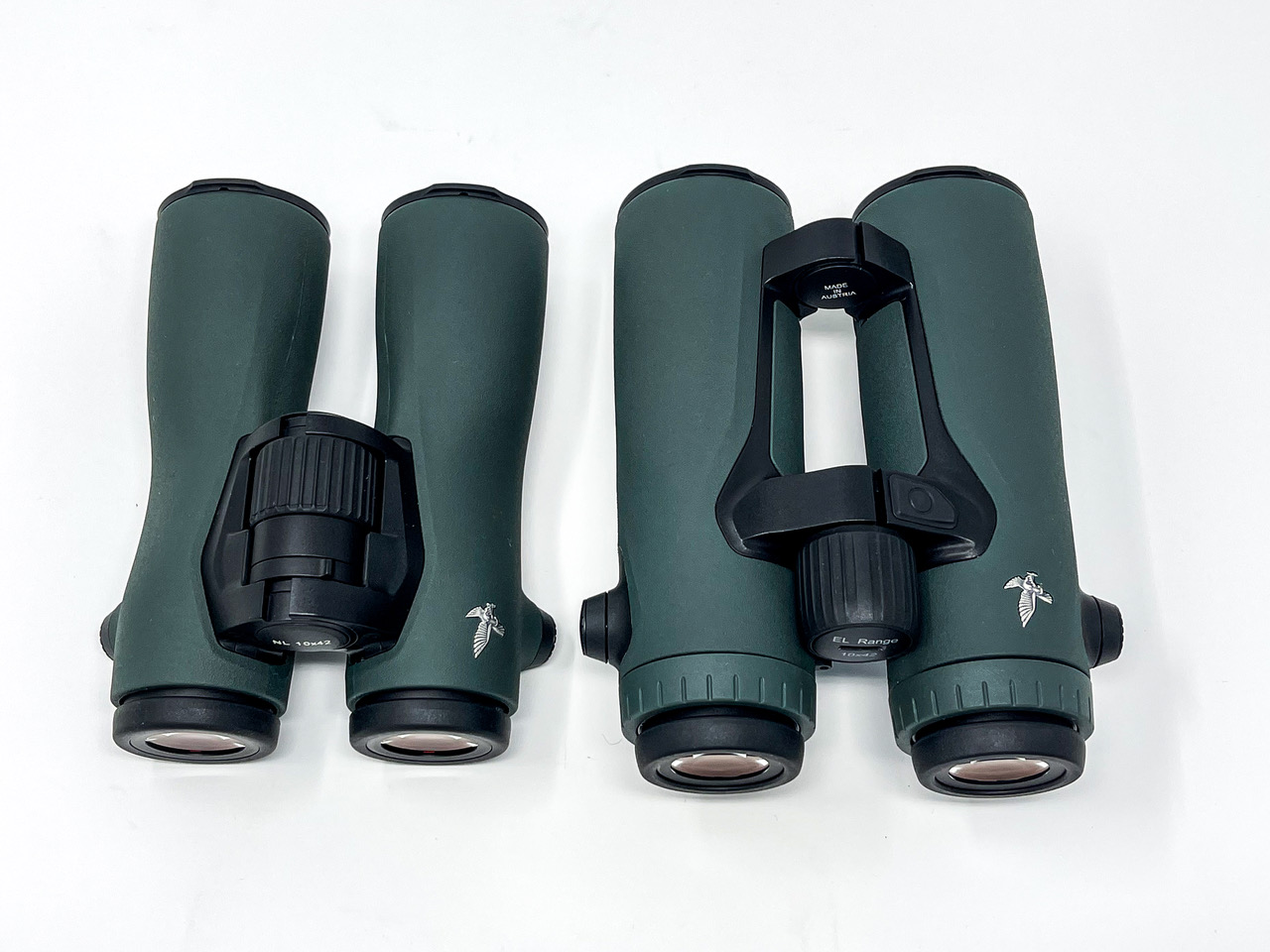
Physical Dimensions
Side by side, the EL Range is noticeably larger than the NL Pure. They are 1/3″ longer and 1/4″ wider and taller than the Pure. You would expect the NL pure to be quite a bit lighter than the EL Range based on physical size, but they are really close. The EL Range is only 2oz. Heavier, weighing in at 32.6 and 30oz, respectively.
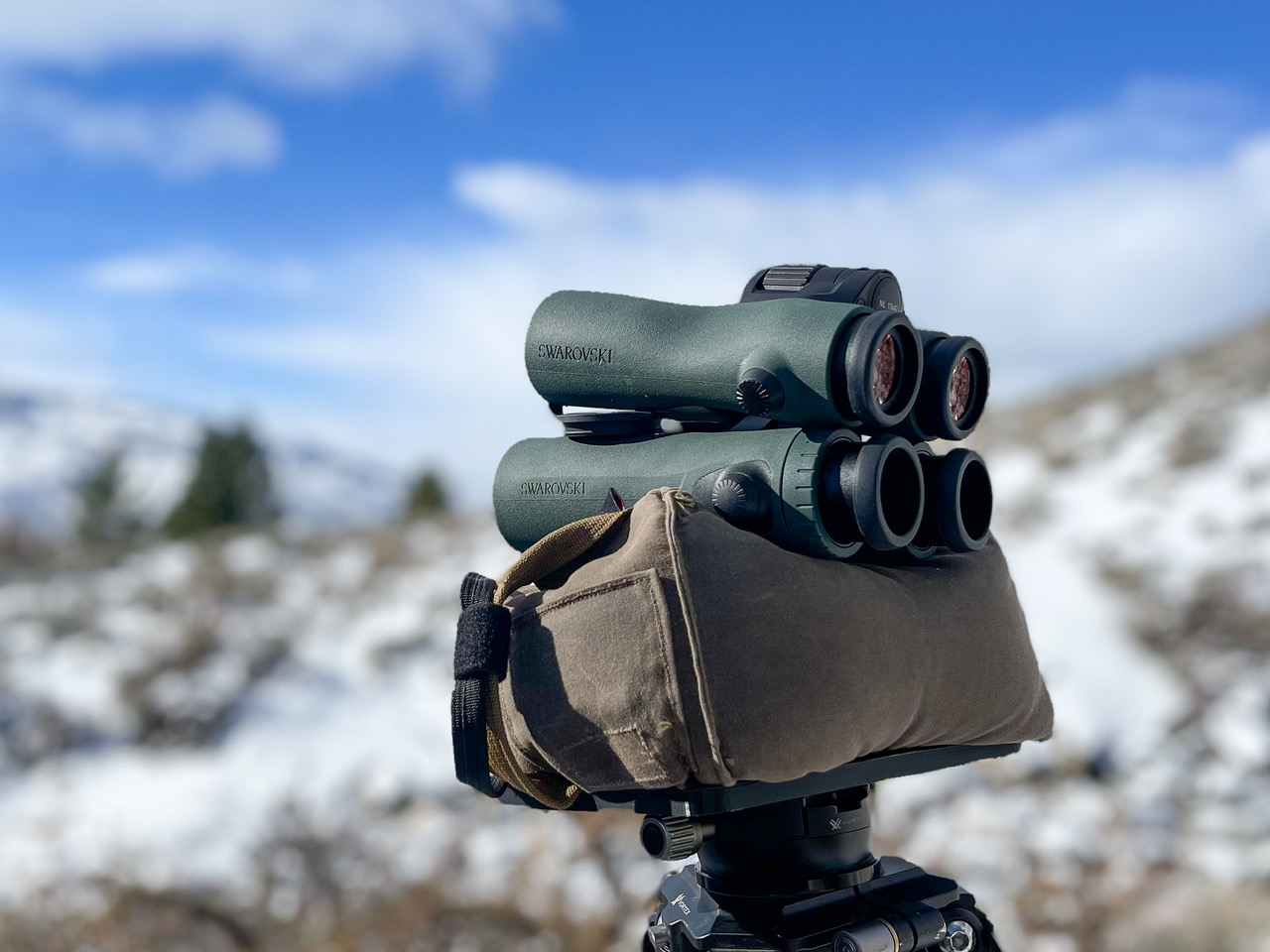
Ergonomics
The EL Range being physically bigger, does not fit in my hands as well as others. They also have the electronics on the bottom side, making them a little boxy on the bottom. They are uncomfortable to me if I am glassing by hand for any length of time.
On the contrary, the NL Pure might be the thinnest binocular I have held in this category. They are ergonomically comfortable but thinner than I am used to. Both pairs are balanced well and offer a wide range of eyecup depths, which I have found a double-edged sword. While the wide range of adjustments is excellent, I often find one eyecup twisted farther in or out than the other when pulling them from my harness.
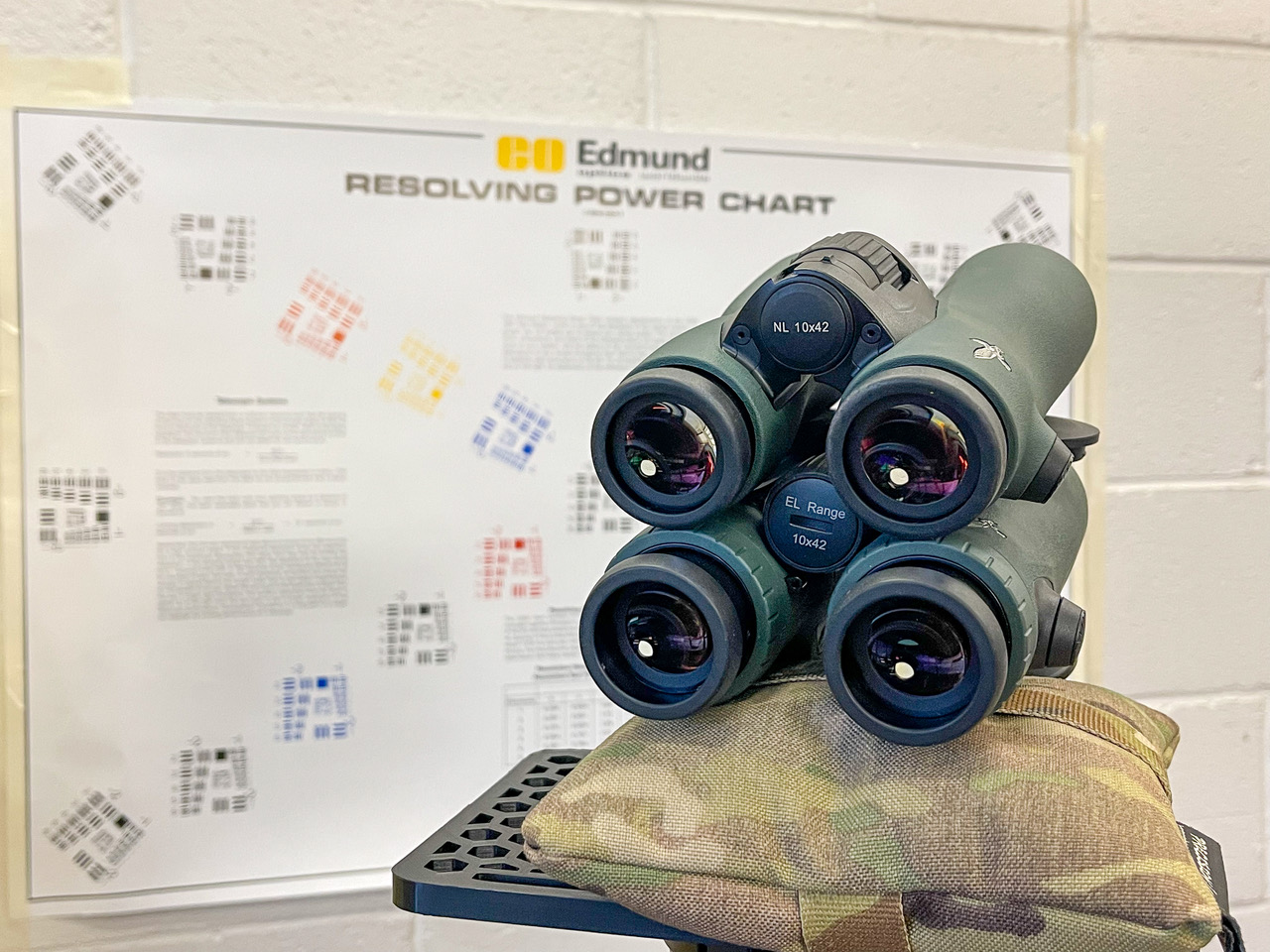
Swarovski Clarity
When I read reviews and they use the term, the best, I often tune out. It is an overused word and comes off as an advertisement for a product. I try to not use that word unless I really mean it. Readers deserve that and that’s the mindset Rokslide is built on. With that said, prepare for me to call it how it is. I will sum up clarity quickly for you.
To the untrained eye, you will not notice an advantage in field use with one or the other. With that said, the NL Pure’s might be the BEST glass I have ever looked through. It is incredible to see the contrast between objects, whether it was in the middle of the FOV or near the edge.
Using a USAF 1950 resolution chart at 35 yards, I will say Color fringing and chromatic aberration were more than I expected with the NL pure near the far edges of the FOV. Compared to the EL Range, they have a sharper fall off of visual acuity; however, that happens near the far edge of the FOV. This made the NL Pure’s range of clarity fantastic throughout the very wide FOV.
While I speak highly of the NL Pure, Swarovski will always put optical clarity first in their products, period. The EL Range is no exception. I do not know how they could put electronics in an optic and not sacrifice optical performance, but they did. This is particularly hard as the electronic display is only in the right barrel. They are the Best RF binoculars optically I have used. There you have it, two bests in one review. If you want to dive deeper into clarity, I suggest you read Robby’s in-depth review of the EL Range and Matt’s review of the NL Pure.
Field Of View
The definite winner in this category is the NL Pure, as it offers nearly 400ft @ 1,000 yards. That is outstanding for a 10x42mm binocular. I am not aware of top-tier binoculars that provide more. Typically, the wider the field of view, the softer the edges are. That makes making a quality binocular this wide particularly hard. The EL Range offers a 360ft @ 1,000-yard field of view, typical in a quality 10x42mm.
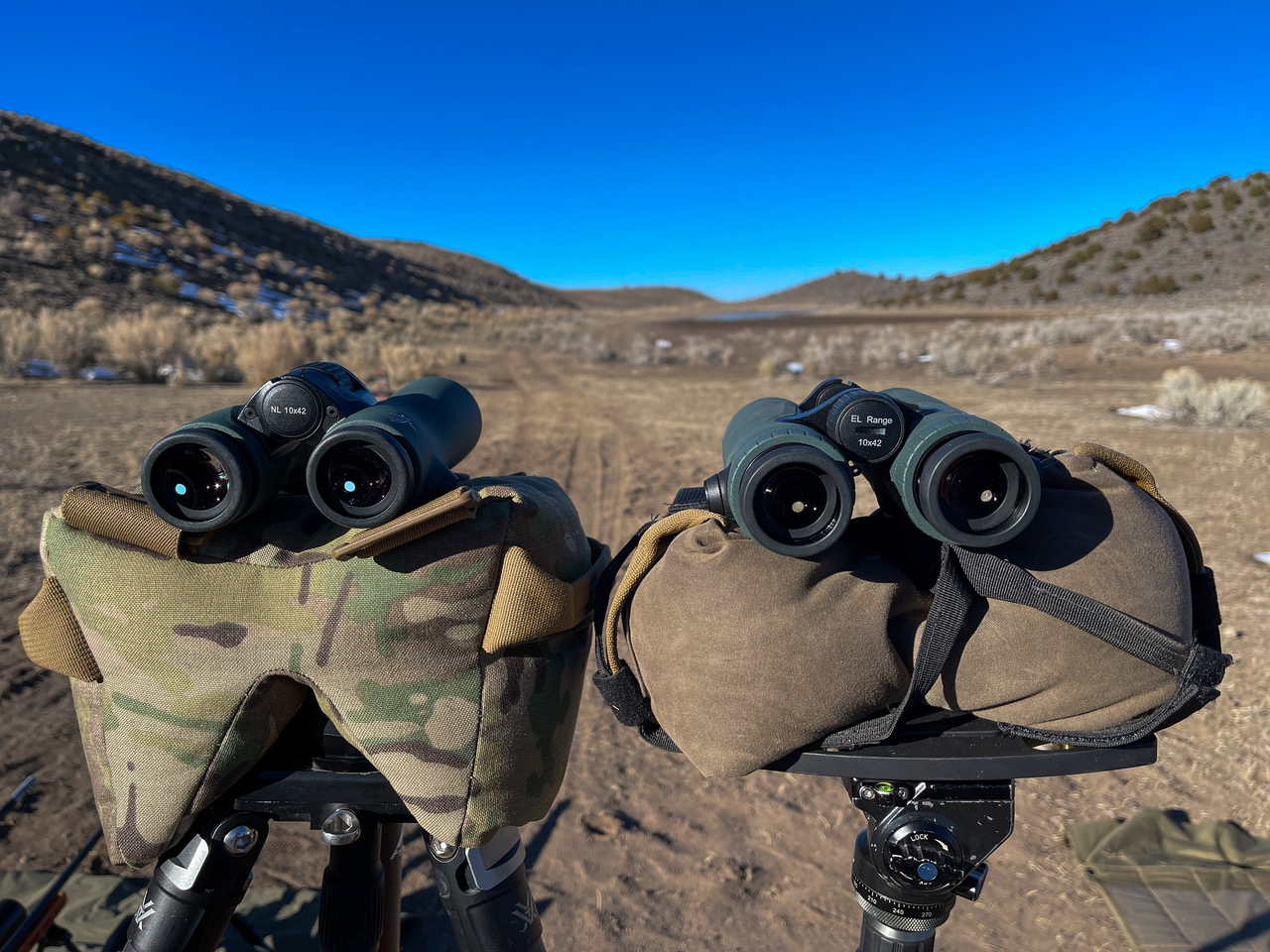
My Verdict
After comparing these fantastic pieces of glass over the last four months, The EL Range TA is a great choice for an archer as it has corrected distance based off angle, right handed yardage button, and can range down to 11 yards. For the rifle hunter, The EL Range TA would also be a good fit if you want a range finding binocular, but do not shoot past the 8-900 yard mark in the field, or in competition.
If you are making longer shots, you should really be using more than the built in sensors of your rangefinder anyway. You will at minimum, need a weather meter of some sort. The EL Range TA is the classic case of Jack of all trades, master of none. While they do both functions extremely well, The NL Pure is slightly optically better, and there are better dedicated rangefinders on the market. However, you will not find a better range finding binocular than the EL Range TA.
Now, suppose you demand the best both, optically, and with your rangefinder. In that case, you should be carrying a set of NL Pure binoculars and a dedicated rangefinder with ballistic capabilities for the weapons you hunt with. It goes without question that mounting a set of NL Pure binoculars on a tripod gives you the best optical performance out of any binocular in the field. This setup is every hunter’s dream and a big buck’s worst nightmare.
Comment on this review or ask Travis questions here.














